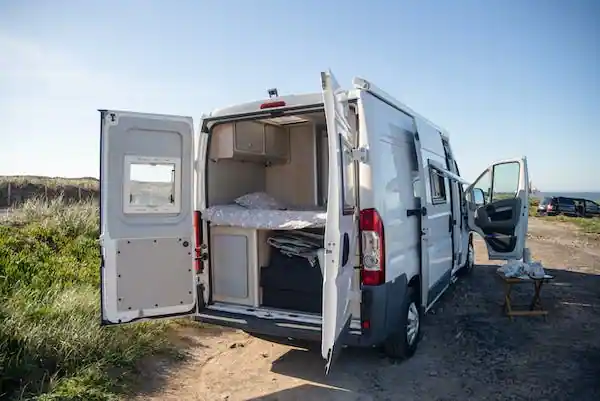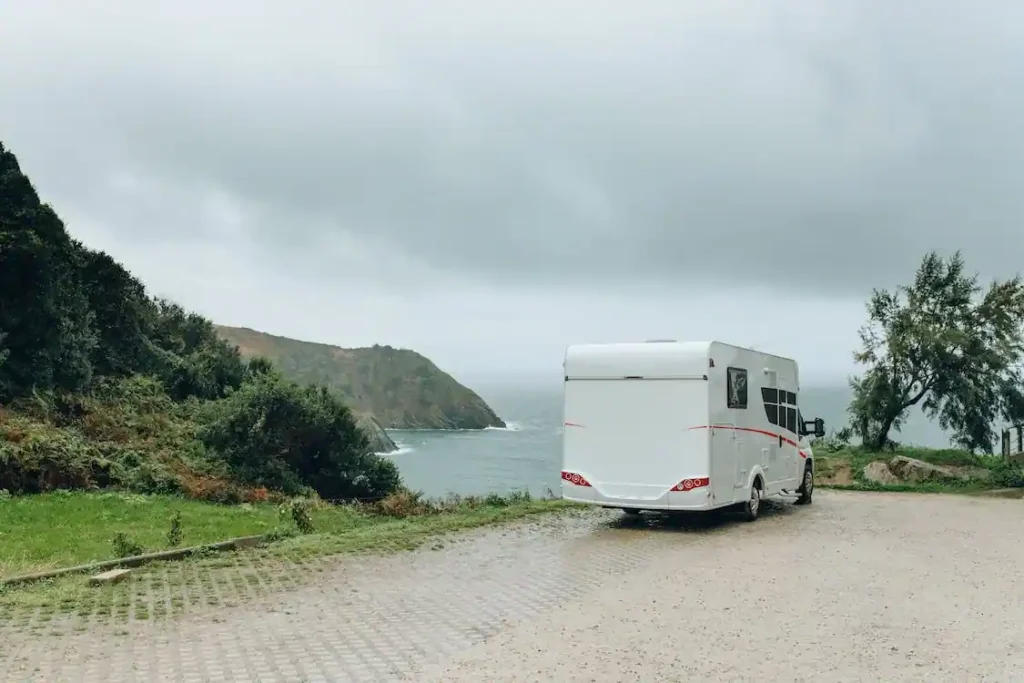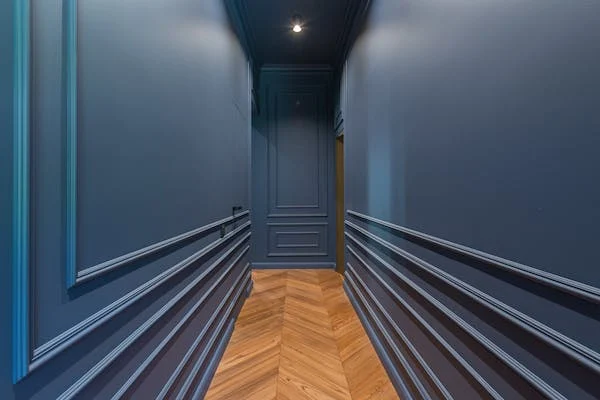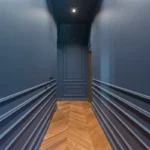Caravan floor insulation, this post is as important as caravan wall insulation. A caravan is a movable lodging offering living quarters for camping or traveling. It is sometimes referred to as a travel trailer or camper trailer. The internal surface of a caravan on which inhabitants walk and move is called the floor. The following details pertain to caravans and their floors. So here we will explain information about, Caravan Wall Insulation and how to insulate a caravan floor. Let’s move on to the information.
Benefits of floor insulation or Benefits of underfloor insulation

In order to design a cozy, healthy as well as energy-efficient living area within a caravan, caravan floor insulation is crucial along with, Caravan Wall Insulation. Insulating the floor aids in temperature control, heat retention, and noise reduction. For getting all benefits everyone thinks about insulating the floors of the caravan. The following are some advantages of caravan floor insulation
Thermal Comfort– Benefits of floor insulation
By insulating the floor of the caravan, you can able to get better control of the internal temperature and create a more comfortable living space. An insulated floor of a caravan can help to reduce heat gain during hot weather and aids in preventing heat loss during cold weather. This enables you to keep the caravan’s interior at a more constant and comfortable temperature. For getting this thermal comfort you have needs to insulate the floors of the caravan.
Energy Efficiency– benefits of underfloor insulation
When the floor is adequately insulated, the caravan uses less energy to heat or cool. By reducing heat transmission through the floor, the insulation allows the heating or cooling system to work less hard to maintain the desired temperature. Insulating the caravan floor will reduce your carbon footprint and enable you to spend less on electricity.
Noise reduction

Insulating the caravan’s floor can help to keep outside noise from entering the vehicle. Insulating the floors of the caravan should help to work as a sound barrier that lessens the impact of outside noise, which is created by caused by wind, rain, and traffic. As a result, the living space within the caravan is quieter and more peaceful.
Reduce the condensation
Insulation can aid in preventing condensation problems within the caravan. It lessens the chance of condensation by establishing a barrier between the warm interior and the cold floor and this keeps the indoor environment healthy and inhibits the growth of mould.
Increased Durability
Insulating the caravan floor can help the vehicle last longer and be more durable. Insulation materials can serve as a barrier, stopping moisture from penetrating the floor structure and deteriorating it over time. Additionally, it can aid in lowering the chance of thermal expansion and contraction, which can cause structural problems.
Extended Camping Season
Caravans that have underfloor insulation are better prepared to withstand colder weather. In colder climates or during the shoulder seasons, the insulation helps retain heat, extending the camping season and enabling more comfortable camping trips.
Resale Value
Compared to a comparable model without insulation, a caravan with underfloor insulation may have a higher resale value. Insulation is a desirable feature because of the additional comfort and energy efficiency it offers, which potential buyers frequently appreciate.
Overall, we can say about caravan floor insulation, after the insulating floor of the caravan you will get, many advantages, such as enhanced durability, reduced noise, reduced dampness, improved thermal comfort, increased energy efficiency, and a better overall living environment.
Caravan underfloor insulation steps

To insulate the floor of the Caravan you need to follow the following steps, it will be helpful to you for better performance of insulation.
Construction
To ensure stability, durability, insulation, and weight considerations, caravan flooring is often built using a combination of materials. Plywood, particleboard, and composite materials like sandwich panels with a foam core are frequently used for caravan floors.
Subfloor
A subfloor framework that offers support and stability is erected on top of which the caravan’s floor is constructed. Typically, steel or aluminum beams and hardwood or composite joists make up the subfloor. To sustain the weight of the caravan and its inhabitants, the flooring must be sufficiently sturdy.
Insulation
To offer thermal comfort and soundproofing, caravan floors are frequently insulated. To stop heat loss or gain and reduce noise transmission, insulation materials like foam or fiberglass are often installed between the floor structure and the interior surface.
Flooring
A flooring material that is both practical and aesthetically pleasing is used to cover the surface of the caravan’s floor. Caravans frequently have flooring made of vinyl, laminate, linoleum, or carpeting. The choice of flooring material is influenced by a variety of elements, including personal preference, cleaning convenience, and durability.
Layout and Design – How to insulate a caravan floor
The floor plan determines the layout and division of spaces within a caravan. It has spaces for eating, sleeping, cooking, and using the loo. Within the restrictive limits of the caravan, the floor layout is created to maximize space utilization and offer pleasant living areas.
Care of caravan floor
To preserve the performance and longevity of the caravan floor, proper care is required. To spot any indications of wear, water damage, or structural problems, routine cleaning and inspection are required. To stop further issues, any damage or deterioration should be immediately fixed.
The particular layout, components, and attributes of a caravan’s floor can differ according to the maker, model, and price point. High-end caravans could have more sophisticated building methods, opulent flooring materials, and extra features like underfloor heating or sophisticated insulation systems.
Best Caravan Underfloor Insulation
Effectiveness, ease of installation, durability, and price are a few things to think about when selecting the best underfloor insulation for a caravan. Here we can give you some basic ideas on what to look for in caravan floor insulation. For the most recent and appropriate choices, it is always advised to study and speak with experts.
Foil insulation- Best caravan underfloor insulation
Due to its reflecting qualities, foil insulation is a well-liked option for underfloor insulation. By reflecting heat into the caravan and preventing heat loss, it can help make it more energy-efficient. To achieve maximum effectiveness, look for foil insulation with a high R-value (thermal resistance value).
Insulated Panels
A few suppliers offer pre-cut insulated panels made especially for caravan underfloor installation. In these panels, there are frequently two layers of protective material sandwiched between layers of foam or rigid insulation. They have good insulating qualities and are rather simple to install.
Spray Foam Insulation
It is a flexible choice that may successfully close gaps and offer insulation in difficult-to-reach places. It enlarges to fill spaces and forms an airtight barrier that stops heat loss and draughts. Spray foam insulation, however, typically requires professional installation.
Insulation Blankets– caravan floor insulation
Fiberglass or mineral wool insulation blankets or batts are frequently used for insulation. They can be put between the floor joists after being cut to size. To protect against moisture, look for insulation blankets with a high R-value and vapor barrier qualities.
Cork insulation – best caravan insulation
Cork Insulation work as a good thermal and sound insulator. You can use this insulation applied or stuck floor walls and roofs but it is very expensive with its high cost.
Glass wool insulation
Glass wool insulation material is known as very good insulation with low cost, it is not much more expensive. Glass wool is fitted correctly to walls or floors and ceilings. It’s sensitive to moisture and tends to mold over time.
Polystyrene insulation
Polystyrene insulation can be more able to resistant to humidity. Polystyrene insulation plates or boards are also not as expensive as cork material, as well as one more thing to consider more people is that it doesn’t need too big a space means it has low thickness. It has a low thermal conductivity and high thermal resistance which makes it the best insulator.
Polystyrene foam’s structure has small air pockets, which can increase its insulating properties.
How To Insulate A Caravan Floor
A caravan’s floor can be insulated to increase its thermal efficiency and increase its comfort throughout the year. Here is a general instruction on how to insulate the floor of a caravan:
Collect the necessary supplies
Remove any furniture, fittings, and personal items from the caravan’s floor.
To reveal the subfloor, remove any current flooring, such as carpet, laminate, or vinyl. A utility knife, measuring tape, glue or sealant, duct tape, mineral wool, or rigid foam boards for the finishing layer, plywood, and floor covering is also required.
Clear the space
Take out any carpet or floor covering to reveal the subfloor. To guarantee optimum insulating material adherence, properly clean the floor.
Selection of Insulation Materials
Depending on your needs and budget, pick an appropriate insulation material. Common alternatives include mineral wool, spray foam insulation, and rigid foam boards (such as expanded polystyrene or extruded polystyrene).
Take into account elements like moisture resistance, ease of installation, and insulation R-value (thermal resistance).
Measurement and cutting
Calculate the floor area’s dimensions and transfer them to the insulation material. To ensure a tight fit within the floor space, cut the insulation boards to the appropriate size using a utility knife. To calculate the necessary amount of insulation material, measure the dimensions of the caravan floor. Keep attention on every obstacle that needs to be avoided, such as heating vents, plumbing, or electrical components.
Installation process- How to insulate a caravan floor
Utilizing a utility knife or other suitable cutting instrument, trim the insulating material to fit the floor space. Make sure the fit is tight and leaves no gaps or voids. Make sure to uniformly distribute the insulation boards or sheets across the whole floor space.
Use the proper glue or sealant to attach rigid foam boards to the flooring if you are using them. By the manufacturer’s recommendations, apply it on the underside of the boards.
To reach the necessary thickness with mineral wool or other loose-fill insulation, distribute it uniformly throughout the floor area. The insulation can be spread and leveled with a rake or by hand. The insulation should be adhered to or sealed on the underside before being pressed firmly onto the subfloor.
Verify that the boards are not separated by any gaps or spaces. If you’re using numerous boards, tightly connect them with duct tape to form a continuous layer. Make sure the insulation is done properly by paying close attention to corners, edges, and difficult-to-reach places.
Fill in seams and gaps
Look for any seams or gaps along the corners and edges of the insulation boards. To stop air leakage and preserve the integrity of the insulation, use glue or sealant to plug these spots. Look for any gaps, seams, or spaces between the insulation boards or sheets when inspecting the insulation installation.
To seal and secure any joints, seams, or apertures, use glue, sealer, or specialty tape. This will support maintaining insulating effectiveness and aid avoid air leakage.
To avoid moisture buildup, think about adding a vapor barrier over the insulation layer, such as a plastic sheet or specialized vapor barrier material. For correct installation, refer to the manufacturer’s instructions.
Protect the insulation
You might need to further secure the insulation, depending on the type of insulation material used. For instance, robust foam boards can be nailed or screwed to the subfloor. Make sure they are securely connected without endangering the caravan’s frame.
Install a vapor barrier
You should think about placing a vapor barrier optional, over the insulation layer to further improve insulation and help to prevent moisture buildup. This could be a sheet of plastic or a specialized vapor barrier substance. It should be firmly fastened to the insulation, with no gaps or overlaps.
Replace the flooring
After the insulation is put in place correctly, you can either reinstall the flooring or lay fresh plywood or other appropriate and correct flooring material on top of the insulation layer. To install, adhere to the manufacturer’s instructions.
The Bottom Line Of Caravan Floor Insulation
To provide the bottom line of this post and conclude this topic we suggest you finally, adding insulation to a caravan’s floor is highly advantageous because it enhances both the interior climate and energy efficiency. during voyaging. By serving as a thermal barrier to prevent heat loss, it maintains a cool atmosphere under a variety of weather conditions.
You must insulate the floors to prevent energy loss and increase the battery life of the caravan, you must choose the proper insulation to insulate the floor of the caravan. Insulating the floors of caravans has shown to be a wise investment because it should make your travels more comfortable and environmentally friendly. You can make your journeys memorable by insulating your caravan floor and embracing the comforts of comfortable travel.
How do you insulate a caravan floor?

A caravan’s floor must be insulated if it is to remain a cozy and energy-efficient living environment, especially in the winter. Insulation done right keeps the interior warm, prevents heat loss, and minimizes the need for unnecessary heating. Here is a step-by-step guide for insulating the floor of a caravan:
Choose Your Insulation Material
There are many different insulation options, each with advantages and disadvantages. Rigid foam board, spray foam, and fiberglass batts are popular alternatives. When choosing an insulating material for your caravan, keep things like R-value (heat resistance), moisture resistance, and ease of installation in mind.
Prepare the Space
To reveal the subfloor, remove any existing flooring or covers from the caravan floor. To provide a flat surface for the installation of insulation, thoroughly clean the floor.
Check for damage, leaks, and bugs in the subfloor before moving forward with insulation. To ensure a strong foundation, address any problems, and carry out any required repairs.
Insulation Cut and Fit
If using fiberglass batts or rigid foam board, measure the size of the floor and cut the insulation to fit the area tightly. Inspect the insulation panels or batts to make sure there are no gaps or voids remaining.
Secure the insulation
Affix the rigid foam board insulation panels to the subfloor with adhesive to secure it. Simply press the fiberglass batts into place. Make sure the insulation is stable and won’t move.
Fill in Joints and Gaps
Fill in any joints or gaps between the insulation panels using foam sealant or tape. To effectively build an air and moisture barrier, this step is essential.
Consider Vapour Barrier
To prevent moisture from entering the floor, you might wish to put a vapor barrier on top of the insulation, depending on the type of insulation used and the climate where you live. A plastic sheet or specialized vapor barrier material can serve as a vapor barrier.
Replace Flooring
The flooring material can be changed once the insulation and any extra vapor barriers have been installed. Use flooring with improved insulating capabilities, such as cork or specific kinds of carpet.
Examine insulation installation
Examine the area surrounding pipes, cables, and any other floor penetrations to look for air leaks. To stop air leaks you must fill in any cracks with the caulking technique.
Keep in mind that effective insulation installation is essential. It’s important to see a professional or get advice from knowledgeable caravan insulation professionals if you’re unsure about the procedure or if your caravan has a distinctive floor structure. Your caravan’s floor will be more comfortable, more energy-efficient, and last longer if it is properly insulated.
Do let us know how you feel about this information by commenting.
Like our Facebook page and follow for other updates like this.
